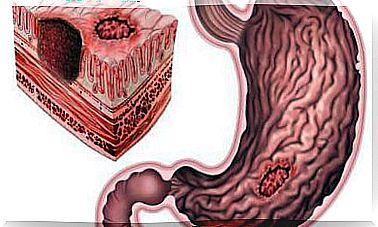Perinatal Asphyxia: Know The Risk Factors

Perinatal asphyxia can occur before, during or after childbirth and for different reasons. The newborn suffers from a lack of oxygen that can lead to death.
There are numerous causes that can trigger problems in the newborn, including aspects before, during or after delivery. We tell you what the latest studies reveal.
One of the leading causes of neonatal death

The World Health Organization (WHO) has included neonatal asphyxia among the main causes of death in newborns. This position, therefore, makes us attach greater importance to this problem.
A baby who suffers asphyxia before delivery may require an emergency C-section. If doctors notice, only at the time of delivery, that the newborn has suffered asphyxia, it is possible that this baby will not cry and not move. In fact, a key feature is that your body looks slack.
In either situation, doctors must act as quickly as possible. Monitoring must be constant and it is essential to monitor the reasons why the baby suffered asphyxia in order to find a solution and thus save the newborn’s life.
Why does perinatal asphyxia arise?
Perinatal asphyxia can appear for different reasons. In fact, these reasons will be different if they happen before, during or after childbirth. Let’s look at some of them.
before delivery
This type of asphyxia that occurs in unborn babies can happen in any month of pregnancy, although it usually occurs as the birth date approaches.
That’s why visits to the doctor are so important to check that everything is going well. Among the reasons would be the following:
- Mother’s anemia.
- Bleeding during pregnancy.
- Inappropriate position of the baby’s head.
- Prolonged gestation (greater than 42 weeks).
- Maternal infection.
during childbirth
During childbirth, some situations that are dangerous for the baby’s life can occur. Although doctors are prepared to handle any circumstance, it is important to know what can happen.
- The umbilical cord is around the baby’s neck or is squeezing it somewhere.
- Pre-eclampsia that produces an elevation in the mother’s blood pressure.
- The mother has a respiratory problem.
- Use of forceps.
- Childbirth takes longer than it should.
Perinatal Asphyxia After Childbirth

Although they have already gone through childbirth, the risk of suffering perinatal asphyxia is present if any of these situations occur.
- The baby is premature and its organs are still immature.
- Presents some type of congenital malformation.
- The baby has lung problems or heart disease.
- The newborn’s weight is much lower than normal.
Usually when a baby has mild asphyxia, he or she may cry a lot, be irritable and have slightly increased muscle tone. However, in general, this does not go on for more than a day.
But, if the situation is more serious, the newborn may suffer seizures, not have the sucking reflex (impairing breastfeeding) and have a very low muscle tone.
neurological damage
The chances that the baby will suffer any neurological damage will depend on whether the asphyxia was resolved as soon as possible and whether or not it caused seizures in the newborn.
However, this occurs when the suffocation situation lasts for a certain period of time or if other factors are added. For example, the risk of suffering neurological damage will be high if the baby has cardiovascular and pulmonary system failures.
Another reason that could increase the risk of suffering neurological damage is that the newborn has acidosis. This occurs when too much acid builds up in the blood.
Despite this, proper care in the hands of qualified personnel who are familiar with this type of situation at the time of delivery is essential to avoid irreversible damage to the newborn. Perinatal asphyxia can be fatal, so all precautions are low.









